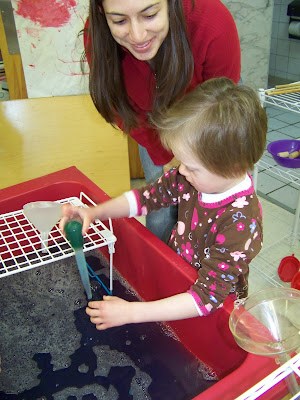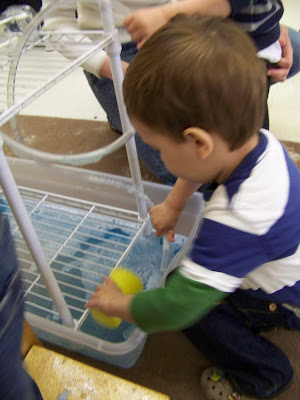 What is the Zone of Proximal Development?
What is the Zone of Proximal Development?The difference between what a learner can do without help and what he or she can do with help.
Vygotsky stated that a child follows an adult's example and gradually develops the ability to do certain tasks without help or assistance.
Vygotsky's often-quoted definition of zone of proximal development presents it as
the distance between the actual developmental level as determined by independent problem solving and the level of potential development as determined through problem solving under adult guidance, or in collaboration with more capable peers.
Vygotsky among other educational professionals believes the role of education to be to provide children with experiences which are in their ZPD, thereby encouraging and advancing their individual learning.
 Scaffolding is a process through which a teacher or more competent peer gives aid to the student in her/his ZPD as necessary, and tapers off this aid as it becomes unnecessary, much as a scaffold is removed from a building during construction. According to education expert Nancy Balaban, "Scaffolding refers to the way the adult guides the child's learning via focused questions and positive interactions.
Scaffolding is a process through which a teacher or more competent peer gives aid to the student in her/his ZPD as necessary, and tapers off this aid as it becomes unnecessary, much as a scaffold is removed from a building during construction. According to education expert Nancy Balaban, "Scaffolding refers to the way the adult guides the child's learning via focused questions and positive interactions.


 Here we see both scaffolding and ZPD perfectly illustrated. N. receives some guidance (scaffolding) from an encouraging adult on how to operate this new tool (the turkey baster). This tool is within N.'s ZPD because, although she might not have been able to figure out it's use by herself, she can be successful with it after some simple directions from a person with previous experience. Had this adult not offered her assistance, the tool could have been dismissed, and the learning experience lost.
Here we see both scaffolding and ZPD perfectly illustrated. N. receives some guidance (scaffolding) from an encouraging adult on how to operate this new tool (the turkey baster). This tool is within N.'s ZPD because, although she might not have been able to figure out it's use by herself, she can be successful with it after some simple directions from a person with previous experience. Had this adult not offered her assistance, the tool could have been dismissed, and the learning experience lost. Then, we see the adult step back and observe to see what theories N. might be exploring. This is an important part of the scaffolding process! Knowing how to offer some guidance on usage of tools but not to tell her what to do with the tool once mastered.
Then, we see the adult step back and observe to see what theories N. might be exploring. This is an important part of the scaffolding process! Knowing how to offer some guidance on usage of tools but not to tell her what to do with the tool once mastered. N.'s use of the tools is observed by other children thereby scaffolding their cognitive theories. While the turkey baster may be too difficult (beyond the range of their individual ZPD) for some of the children to physically maneuver, the smaller droppers are available for them to use.
N.'s use of the tools is observed by other children thereby scaffolding their cognitive theories. While the turkey baster may be too difficult (beyond the range of their individual ZPD) for some of the children to physically maneuver, the smaller droppers are available for them to use.
 The nearby adult has observed that N. wishes to pour her water through the funnel with the tube connected. She offers a hand so that N. can observe the results of her theory. She doesn't interrupt the flow of the cognitive process, she is simply nearby, paying attention, and cognizant of the importance of this process.
The nearby adult has observed that N. wishes to pour her water through the funnel with the tube connected. She offers a hand so that N. can observe the results of her theory. She doesn't interrupt the flow of the cognitive process, she is simply nearby, paying attention, and cognizant of the importance of this process.
 The children show a very healthy curiosity, fear, and wonder when approaching a new creature in the Wonder Studio. How can we build upon these characteristics?
The children show a very healthy curiosity, fear, and wonder when approaching a new creature in the Wonder Studio. How can we build upon these characteristics? I believe in offering children a way to actively observe living creatures. The spray bottles offer a way to engage the new animal and observe it from a distance.
I believe in offering children a way to actively observe living creatures. The spray bottles offer a way to engage the new animal and observe it from a distance. After they observe the animal's reaction to stimulus, the children can vary their approach.
After they observe the animal's reaction to stimulus, the children can vary their approach. 





 He says, "Hello Worm!"
He says, "Hello Worm!"
 Nothing Without Joy!
Nothing Without Joy!
























































